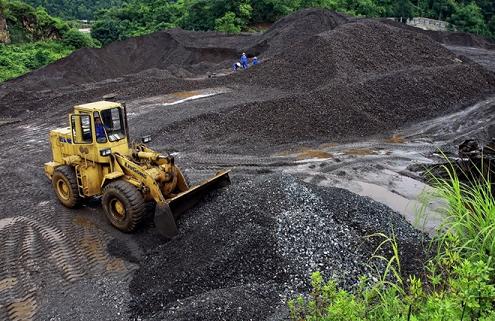Requirements for iron ore exploration in Vietnam
Recently, the Ministry of Industry and Trade has issued Circular 33/2010/TT-BTNMT stipulating the exploration, classification of reserves, and resources of iron ore mines, which sets forth technical requirements for iron ore exploration in Vietnam.

Requirements for iron ore exploration in Vietnam
Article 18 Circular 33/2010/TT-BTNMT stipulates technical requirements for iron ore exploration as follows:
1. Geological Research
The geological structure of the mine, the origin of formation, spatial conditions, size and shape, internal structures, taper characteristics, distribution of different ore types, alteration characteristics, and relationships between ore bodies and surrounding rocks, folding structures, and tectonic disruptions must be clarified; a mine-scale geological map at a ratio of 1:5000 – 1:1000, depending on the size and geological complexity of the mine, accompanied by appropriate geological cross-sections and stratigraphic columns, must be prepared; a regional geological map with a scale of 1:25000 – 1:10000 is required.
2. Exploration Works
- In exploring iron ore mines, both drilling and excavation works can be used. The selected exploration works must be suitable for spatial conditions, distribution depth, geological structure, ore body morphology, and thickness and characteristics of the cover layer;
- Outcrops and surface parts of ore bodies or mineralized zones must be studied through excavation works and shallow drilling combined with geophysical, geochemical methods, and detailed sampling;
- Deep iron ore mine explorations are mainly conducted through drilling, maximizing the use of geophysical study methods on the surface and in boreholes. When ore body depth is not significant, shallow drilling combined with excavation is employed. At mines with very complex geological structures, underground excavation works must be performed at representative segments of the ore body to clarify spatial conditions, shape, internal structures, material components, ore types, and for technological sampling;
- Boreholes must recover the highest core percentage possible. The core sampling rate must not be less than 70% for each drilling cycle. To enhance drilling work reliability, borehole geophysical methods must be used;
- For vertical boreholes deeper than 200m, every 20-50m must have azimuth and dip angle measurements and checks. Measurement results must be considered when constructing geological cross-sections, plans, and calculating ore body thickness;
- To cut through steeply dipping ore bodies, inclined drilling is the most reasonable method;
- Exploration works must cut through the entire thickness of the iron ore body within the exploration boundary.
3. Requirements for Arrangement of Exploration in Vietnam
- Exploration works must be arranged in a grid to comprehensively study geological structure, morphology, size, spatial conditions, stability of thickness, and quality of the iron ore body;
- The orientation density of exploration works for iron ore mines is referenced in the Appendix of this Circular;
- Exploration documentation
All exploration works, mining works, natural and artificial outcrops at the mine must be described, geologically mapped, and primary documentation promptly, fully, and accurately compiled according to current regulations on primary documentation in mineral exploration and fed onto practical documentation maps.
More details can be found in: Circular 33/2010/TT-BTNMT, effective from January 28, 2011.
Nguyen Phu
- Number of deputy directors of departments in Vietnam in accordance with Decree 45/2025/ND-CP
- Cases ineligible for pardon in Vietnam in 2025
- Decree 50/2025 amending Decree 151/2017 on the management of public assets in Vietnam
- Circular 07/2025 amending Circular 02/2022 on the Law on Environmental Protection in Vietnam
- Adjustment to the organizational structure of the Ministry of Health of Vietnam: Certain agencies are no longer listed in the organizational structure
- Vietnam aims to welcome 22-23 million international tourists in Vietnam in 2025
-

- Notable new policies of Vietnam effective as of ...
- 16:26, 11/04/2025
-
.Medium.png)
- Notable documents of Vietnam in the previous week ...
- 16:21, 11/04/2025
-
.Medium.png)
- Notable documents of Vietnam in the previous week ...
- 16:11, 02/04/2025
-
.Medium.png)
- Notable new policies of Vietnam to be effective ...
- 16:04, 02/04/2025
-
.Medium.png)
- Notable new policies of Vietnam effective from ...
- 14:51, 21/03/2025
 Article table of contents
Article table of contents
